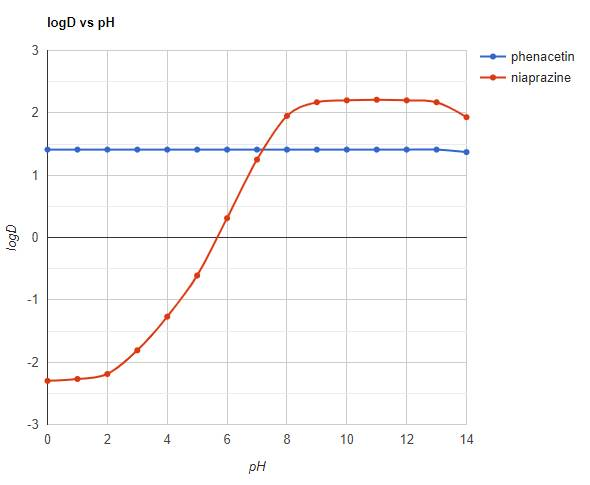Hello, i'm a Milan university student in thesis in an analytical lab.
I'm currently trying to develop an analytical method to isolate and analyze Niaprazine in GC-FID, by using as internal standard Phenacetin. But as i know we, in this laboratory, have no experience with this type of extraction!
I need the SPE extraction because Niaprazine is in a complex matrix (Syrup).
Now the problem is that by doing the extraction using some spare SPE columns of agilent we have in the lab (From what i read the solid phase is a mixture of C18+cation exchange), it seems i don't retain those compounds, since the last extraction with a mixture of CH2Cl2 doesn't seem neither of my target analytes.(I used some standards to make sure it was not a GC-FID method problem, and it does seem to be an extraction problem.
First of all i'm not an expert of SPE extraction since i always studied those on paper, and applied already existing extraction methods, so i might be doing something wrong for sure. My professor suggested to use the Methadone's extraction method certified to work with this type of columns.
This is the Methadone's SPE method applied:
- Sample preparation: 0.5 mL Niaprazine std in MeOH + 0.5 mL Phenacetine in methanol + 2 mL of phosphate buffer pH 6
- Columns conditioning: 2 mL of Methanol + 2 mL of water mq (flow 1 mL/min)
- After the conditioning i take the whole sample solution (after Vortex), and i start the SPE extraction with a flow of 1 mL/min
- Washing of the columns: 1 mL of water + 2 mL of HCl + 1 mL of MeOH, then i let the columns in high vacuum for 5 minutes.
- After the 5 minutes i use 2 mL of a mixture of IPA+CH2Cl2 to extract the content of the SPE solid phase.
As i said when i try to do this procedure it doesn't work.
Since i have no experimental background on this type of experiments, i decided to do some considerations.
I used CHCl3 to repeat the extraction on a column, and i understood that the problem was not the extracting solvent since on the solid phase of the columns my target analytes are not retained.
So i decided to do a further test, decided to do a TLC on the 1st extract and i saw that there my target analytes were not retained at all since the concentration of those in the solution was the same as the initial concentration in the sample prepared during the sample preparation.
Now since i wanted more evidence of this, i decided to prepare a STD of phenacetin in methanol with a buffer and did only the 1st step of the extraction. Then i did a GC-FID analisys and saw that the major part of this standard was in the solution below the column, so it was not retained at all.
So i did started questioning the method used since i was told to apply that, and it had to be working.
After a little chat with my professor we thought that we could use another method by applying the nicotine extraction method from urine.
The difference from the methadone's method is that the columns are conditioned with the buffer pH 6 and not with methanol. I still need to test this, and i'll probably do it next week, but i wanted to know what you think about this.
I've done a lot of tests and it seems to be really hard to extract those two molecules with this type of columns.
I have a feeling that a big chunk of the problem is the methanol used in the IS preparation, and in the washing phase. And i'm pretty sure it's him that, even tho i let the flow of 1 mL/min, doesn't let my target compounds to interact with the solid phase.
I'm really sorry for the wall of text, but i thought here i could find something to start from. If you can help me with anything i would really appreciate!
Do you think i'm using the wrong solid phase columns, or am i doing something wrong with the extraction methods, like wrong solvents, or wrong pH?
Ty for the help, and for reading all of this!
(e.g. When i say that i don't see Niaprazine and Phenacetine, i mean that i don't see them at all, like 0 concentration at their RT(verified by using standard samples on my GC column)

